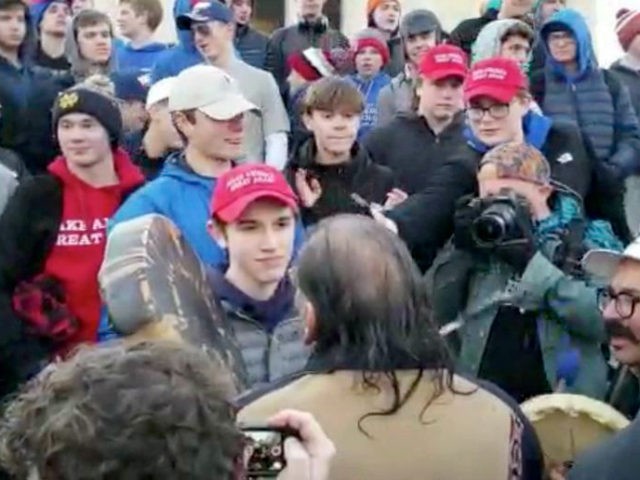A federal judge dismissed a $250 million defamation suit Friday, which Covington student Nicholas Sandmann filed against the Washington Post.
Judge William O. Bertelsman, whom President Jimmy Carter appointed to the bench, ruled that the seven Post articles and three tweets about the 17-year-old could be defined as opinion protected by the First Amendment:
Nicholas Sandmann lawsuit against the Washington Post dismissed. Details in the attached link.https://t.co/F5yH5ENiy9
— Todd V. McMurtry (@ToddMcMurtry) July 26, 2019
The lawsuit accused the Washington Post of libelous coverage, saying the outlet should pay $250 million in damages for publishing “a series of false and defamatory print and online articles” about Sandmann.
But the judge ruled that the articles mentioning Sandmann must be “more than annoying, offensive or embarrassing” to be considered defamation.
“Few principles of law are as well-established as the rule that statements of opinion are not actionable in libel actions,” Bertelsman wrote in court documents.
Bertelsman also noted that the Post had a right to slant its coverage on the story from Philips’ perspective, adding that Sandmann’s defamatory claims were focused on the students as a whole.
“And while unfortunate, it is further irrelevant that Sandmann was scorned on social media,” Bertelsman wrote.
The Washington Post communications director said in a statement that the paper was “pleased” the case had been dismissed:
“From our first story on this incident to our last, we sought to report fairly and accurately the facts that could be established from available evidence, the perspectives of all of the participants, and the comments of the responsible church and school officials,” Washington Post director of communications Shani George said in a statement. “We are pleased that the case has been dismissed.”
Attorneys for Sandmann, who say they will appeal the Bertelsman decision, have called out the Post in the past for its inaccurate reporting on the Sandmann controversy:
The Post has issued an Editor’s Note about updates to its initial coverage of the Jan. 18 incident at the Lincoln Memorial: https://t.co/rhzKZ1715K
We’ve also deleted this Jan. 19 tweet in light of later developments. For more, see the Editor’s Note. pic.twitter.com/O7qCSnBMPO
— The Washington Post (@washingtonpost) March 1, 2019
An editor’s note from the Washington Post reads:
Subsequent reporting, a student’s statement and additional video allow for a more complete assessment of what occurred, either contradicting or failing to confirm accounts provided in that story — including that Native American activist Nathan Phillips was prevented by one student from moving on, that his group had been taunted by the students in the lead-up to the encounter, and that the students were trying to instigate a conflict.
The correction continued, “The high school student facing Phillips issued a statement contradicting his account; the bishop in Covington, Kentucky, apologized for the statement condemning the students; and an investigation conducted for the Diocese of Covington and Covington Catholic High School found the students’ accounts consistent with videos.”
Sandmann and his fellow students were the subjects of a viral encounter of a January 18 incident at the Lincoln Memorial where he was seen wearing a “Make America Great Again” hat while Native American activist Nathan Philips beat his drum in front of him.
Because nobody had a full picture of the confrontation at the time, many in the media distorted the story by going off selectively edited clips to call Sandmann and his friends “racist.”
The online backlash was swift on both sides, and President Donald Trump tweeted in support of the Covington students:
Looking like Nick Sandman & Covington Catholic students were treated unfairly with early judgements proving out to be false – smeared by media. Not good, but making big comeback! “New footage shows that media was wrong about teen’s encounter with Native American” @TuckerCarlson
— Donald J. Trump (@realDonaldTrump) January 22, 2019
Attorneys for Sandmann and his family have separate lawsuits pending against CNN, the New York Times, and a laundry list of specific journalists for allegedly slandering him.

COMMENTS
Please let us know if you're having issues with commenting.